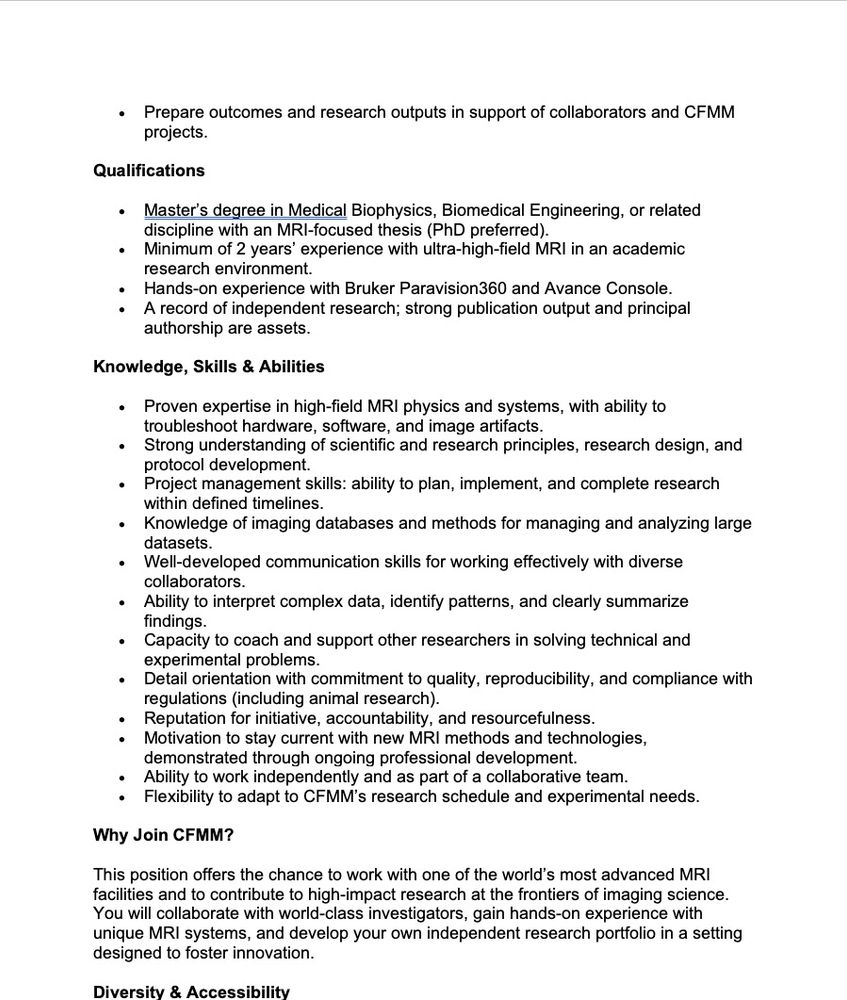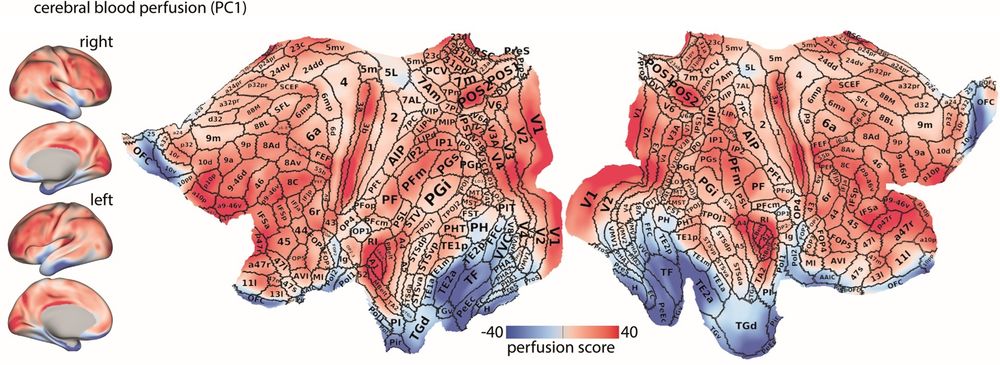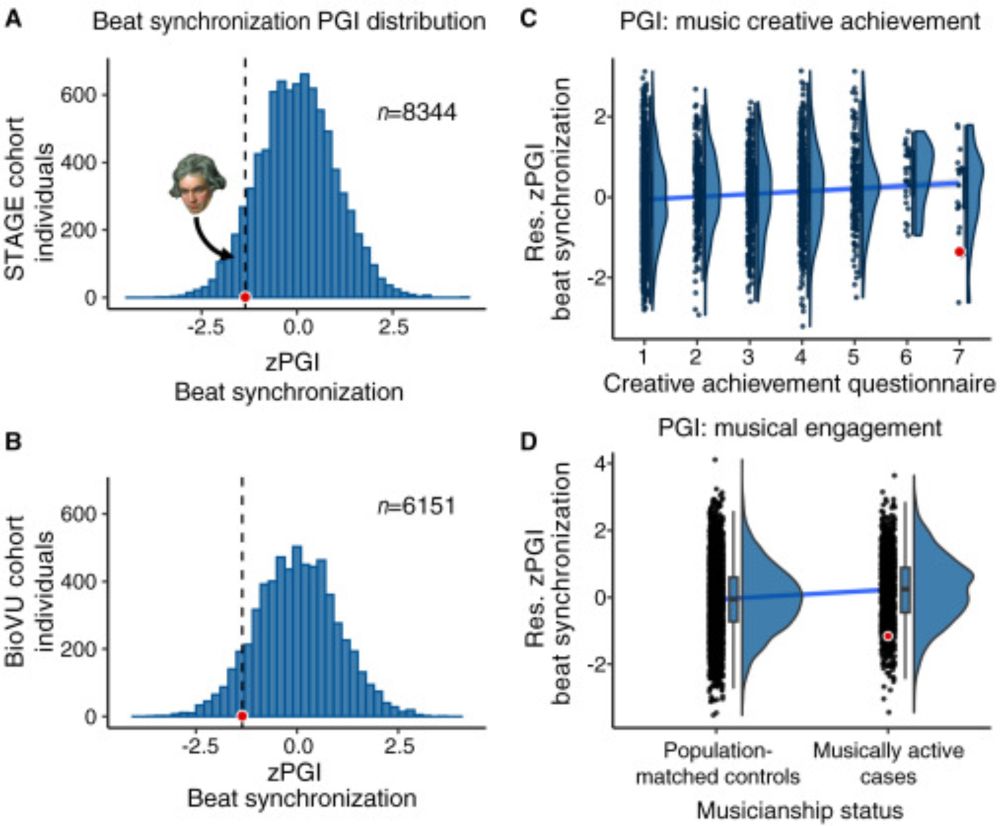
A speech about what drives me, how science and open source are bitter victories, unable to make improve the world if society does not embrace them for the better:
gael-varoquaux.info/personnal/a-...
@olegolt.bsky.social
Doctoral Researcher @isnlab.bsky.social | part of @mps-cognition.bsky.social | previously @mpicbs.bsky.social, @mpi-nl.bsky.social & @univie.ac.at https://cognition.maxplanckschools.org/en/doctoral-candidates/ole-goltermann

A speech about what drives me, how science and open source are bitter victories, unable to make improve the world if society does not embrace them for the better:
gael-varoquaux.info/personnal/a-...

New paper alert! Rare DNA changes in the SETBP1 gene are linked to speech problems & diverse syndromes affecting brain development. Work led by ace postdoc @maggiemkwong.bsky.social uncovered impact of different gene variants, coupling clinical/speech evaluation to molecular & cellular readouts.🧬🗣️🔬🧪
10.10.2025 17:35 — 👍 31 🔁 9 💬 1 📌 1
In 2016 Hinton predicted that AI would replace all radiologists in five years. Ten years later, why hasn't it happened? This post is a great explainer.
www.understandingai.org/p/ai-isnt-re...
Ever thought about how to make your research more inclusive? 🧠✨
We worked with members of the public and patient contributors to understand what makes it harder for people to take part in research — from accessibility and scheduling to lab environments and communication. (🧵 1/3)

Image shows just two example headlines from prominent media outlets earlier this week, heralding a newly published discovery that supposedly "rewrites human evolution". Left side, from the BBC: "Million-year-old skull rewrites human evolution, scientists claim"; right side, from the New York Post: "1M-year-old skull discovery could change everything we know about human evolution".
New analysis of a 1-million yr old fossil skull captured worldwide media attention this week, with many headlines saying it requires a complete rewrite/rethink of human evolution. This is an intriguing study & it's brilliant to see so much public enthusiasm for deciphering our origins, but....1/n 🧪
27.09.2025 12:40 — 👍 79 🔁 26 💬 2 📌 5
🚨 New paper in Nature Methods:
HippoMaps: multiscale cartography of the human hippocampus
Open-source tools & data to explore structure and function of the 🍤🧠 (histology, in/ex vivo MRI, iEEG)
Led by @jordandekraker.bsky.social
docs: hippomaps.readthedocs.io
paper: doi.org/10.1038/s415...
🚨 PhD/Postdoc alert 👇
If you are interested in doing a PhD/Postdoc in computational psychiatry (starting Sept 2026), do get in touch by October 4th at ondrej.zika@pm.me :)
Any inquiries are welcome. To apply, please attach your CV, half page motivation and half page research statements.

🔍 Have we solved the replication crisis?
Join us for an IGOR panel discussion on the state of Open Science in biological psychology more than a decade after the crisis first hit.
📅 Friday, 10 Oct | 10:00–11:00 CET
💻 Online (contact us for the link)
#OpenScience #neuroskyence #academicsky
[1/3]
I mean yes this is funny, but the fact that these unconstitutional stormtroopers are so directionless that they literally stand around waiting for random nonwhite delivery guys to bike past them is just pathetic. No mandate, no mission, no clue. Just racism.
29.09.2025 03:16 — 👍 26200 🔁 7563 💬 600 📌 190
Super proud of this collaboration with rockstar Ryan Raut - born out of playing in the sandbox in our last year of grad school! Multi-scale brain activity can be predicted from a simple measure of arousal like pupil diameter. Out with linear causality, in with dynamic systems to explain neurobiology
24.09.2025 21:52 — 👍 77 🔁 22 💬 3 📌 4In some way, it's trivial:
The #brain & the rest of the #body (e.g. the #heart) are coupled.
Yet, we spelled it out
w/ A. Villringer & V. Nikulin for current scientists (below)
w/ @martager.bsky.social @agatapatyczek.bsky.social @el-rei.bsky.social for future scientists bsky.app/profile/mart...

Incredible study by Raut et al.: by tracking a single measure (pupil size), you can model slow, large-scale dynamics in neuronal calcium, metabolism, and brain blood oxygen through a shared latent space! www.nature.com/articles/s41...
25.09.2025 08:53 — 👍 66 🔁 17 💬 1 📌 1"We are told that AI is inevitable, that we must adapt or be left behind. But universities are not tech companies. Our role is to foster critical thinking, not to follow industry trends uncritically." www.ru.nl/en/research/...
12.09.2025 10:45 — 👍 874 🔁 373 💬 11 📌 20I’m super excited to finally put my recent work with @behrenstimb.bsky.social on bioRxiv, where we develop a new mechanistic theory of how PFC structures adaptive behaviour using attractor dynamics in space and time!
www.biorxiv.org/content/10.1...

🚨 I am over the moon 🌓 to announce that I am joining University College Dublin @ucddublin.bsky.social as an Assistant Professor this fall to start the Uncertain Mind (UMI) lab 💫
I am looking for PhD/Postdoc candidates to join (more below 👇 ). Please RT as the deadline is pretty soon 🙏

Abstract: Under the banner of progress, products have been uncritically adopted or even imposed on users — in past centuries with tobacco and combustion engines, and in the 21st with social media. For these collective blunders, we now regret our involvement or apathy as scientists, and society struggles to put the genie back in the bottle. Currently, we are similarly entangled with artificial intelligence (AI) technology. For example, software updates are rolled out seamlessly and non-consensually, Microsoft Office is bundled with chatbots, and we, our students, and our employers have had no say, as it is not considered a valid position to reject AI technologies in our teaching and research. This is why in June 2025, we co-authored an Open Letter calling on our employers to reverse and rethink their stance on uncritically adopting AI technologies. In this position piece, we expound on why universities must take their role seriously toa) counter the technology industry’s marketing, hype, and harm; and to b) safeguard higher education, critical thinking, expertise, academic freedom, and scientific integrity. We include pointers to relevant work to further inform our colleagues.

Figure 1. A cartoon set theoretic view on various terms (see Table 1) used when discussing the superset AI (black outline, hatched background): LLMs are in orange; ANNs are in magenta; generative models are in blue; and finally, chatbots are in green. Where these intersect, the colours reflect that, e.g. generative adversarial network (GAN) and Boltzmann machine (BM) models are in the purple subset because they are both generative and ANNs. In the case of proprietary closed source models, e.g. OpenAI’s ChatGPT and Apple’s Siri, we cannot verify their implementation and so academics can only make educated guesses (cf. Dingemanse 2025). Undefined terms used above: BERT (Devlin et al. 2019); AlexNet (Krizhevsky et al. 2017); A.L.I.C.E. (Wallace 2009); ELIZA (Weizenbaum 1966); Jabberwacky (Twist 2003); linear discriminant analysis (LDA); quadratic discriminant analysis (QDA).

Table 1. Below some of the typical terminological disarray is untangled. Importantly, none of these terms are orthogonal nor do they exclusively pick out the types of products we may wish to critique or proscribe.

Protecting the Ecosystem of Human Knowledge: Five Principles
Finally! 🤩 Our position piece: Against the Uncritical Adoption of 'AI' Technologies in Academia:
doi.org/10.5281/zeno...
We unpick the tech industry’s marketing, hype, & harm; and we argue for safeguarding higher education, critical
thinking, expertise, academic freedom, & scientific integrity.
1/n

Are you an early career researcher (undergrad to postdoc) who could use advice about navigating peer review? Are you stuck on a manuscript submission or revision? Have general questions about peer review?
Schedule a 30-min chat with any member of @reviewerzero.bsky.social! We'd love to help 😊

This is in a certain sense the follow-up to a blog post I wrote 3 years ago (!) after I had looked into the topic for a paper with Felix Elwert, who is thus once again to blame for large chunks of my output.
www.the100.ci/2022/05/27/%...

Delighted to share our work on replay and successor representations! We find replay during very short task pauses in human visual cortex that is linked to learning SRs & happens when learning is implicit. Study led by @lnnrtwttkhn.bsky.social
#compneuro #neuroskyence
www.pnas.org/doi/10.1073/...
Now out in @natneuro.nature.com
What happens to the brain’s body map when a body-part is removed?
Scanning patients before and up to 5 yrs after arm amputation, we discovered the brain’s body map is strikingly preserved despite amputation
www.nature.com/articles/s41593-025-02037-7
🧵1/18
We are super excited about the first human transcranial ultrasound study from our lab which is now on BiorXiv, showing the amygdala‘s role in processing ambiguous emotions and showing TUS changed resting-state connectivity and metabolite concentrations (GABA) in the amygdala - a huge team effort! 🥳🙏🏼
20.08.2025 06:45 — 👍 34 🔁 8 💬 1 📌 2Could the diversity of findings in heartbeat-evoked response (HER) research be due to variability in methods?
In our new preprint my co-first authors, Maria Azanova and @willenjoy.bsky.social, and me systematically reviewed 132 M/EEG HER studies and found:



Please repost. The Centre for Functional and Metabolic Mapping is looking for a Preclinical MRI physicist (9.4T and 15.2T Bruker Advance Neo). You will join a team of 14 dedicated staff in Canada's National Ultra-high field MRI platform who also operate 3T and 7T human scanners in the same facility.
19.08.2025 18:49 — 👍 19 🔁 26 💬 1 📌 2Thanks to all (co)authors & reviewers for their contribution to this study on #layer specific changes in #sensory #cortex across the #lifespan in #humans & #mice now out in @natneuro.nature.com Here is a short summary of our findings 1/6
11.08.2025 14:29 — 👍 41 🔁 19 💬 1 📌 1
May et al. find that the relationship between peak alpha frequency and pain does not generalize to brief experimental pain calling for a systematic exploration across different pain types. Learn more in #PAIN bit.ly/3Hmxszm
12.08.2025 12:00 — 👍 2 🔁 2 💬 0 📌 0
NEW PREPRINT
Explainable AI refers to an extremely popular group of approaches that aim to open "black box" AI models. But what can we see when we open the black AI box? We use Galit Shmueli's framework (to describe, predict or explain) to evaluate
arxiv.org/abs/2508.05753

Normative blood perfusion map on lateral and medial views of the inflated and 2D flat cortical surfaces (fsLR). Borders and areal names of the multi-modal Glasser parcellation are overlaid on the flat surface. The figure highlights the non-uniform distribution of perfusion scores across the cortex, with areas that have sharp gradient compared to their underlying perfusion score levels (e.g., LIPv and MT/MST).
How does cerebral #BloodPerfusion map onto micro-, meso- & macro-scale brain structure? @asafarahani.bsky.social @misicbata.bsky.social &co characterize blood perfusion in the #HumanBrain, revealing how it changes with age & in #NeurodegenerativeDisease @plosbiology.org 🧪 plos.io/46AEURS
31.07.2025 17:09 — 👍 9 🔁 7 💬 0 📌 0
If someone you know buys into claims about "genetic optimization" of embryos using polygenic scores of cognition, just send them our 2024 paper on Beethoven & musicality. We wrote it to help communicate limits of individual-level genetic predictions & complexity of links between DNA & behaviour. 🧪👇
07.08.2025 11:09 — 👍 180 🔁 88 💬 7 📌 10Our position paper on algorithmic explanations is out—excited to share it! 🙌
Proud of this collaborative effort toward a scientifically grounded understanding of generative AI.
@tuberlin.bsky.social @bifold.berlin @msftresearch.bsky.social @UCSD & @UCLA